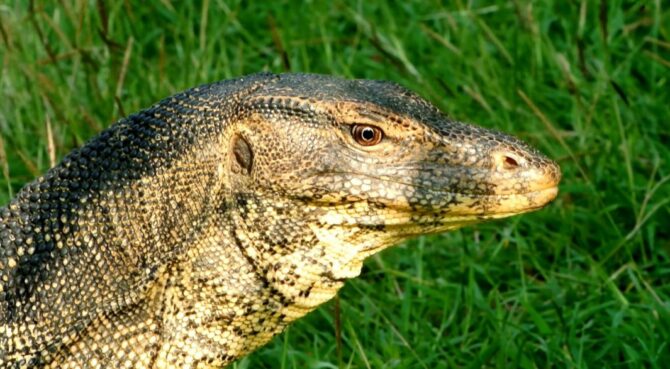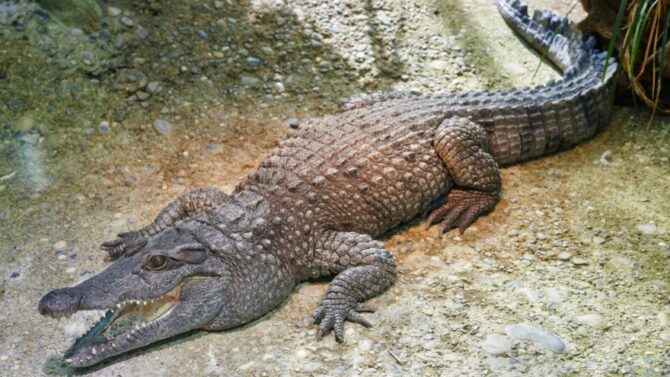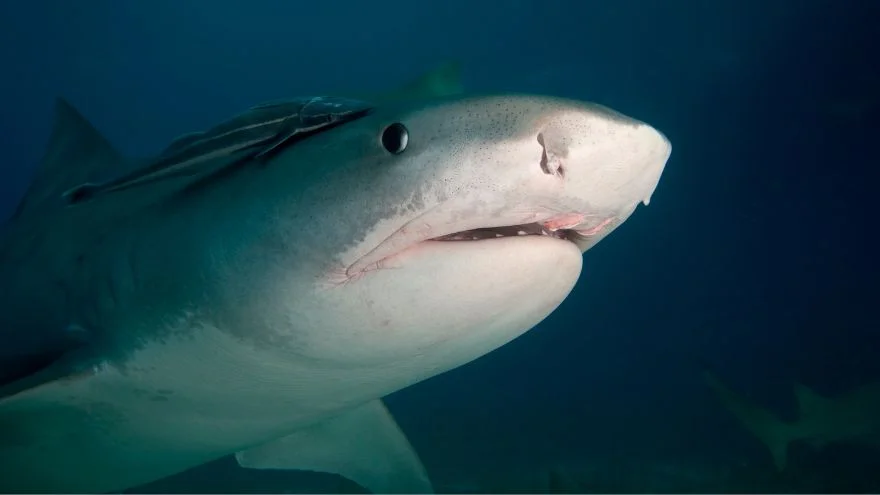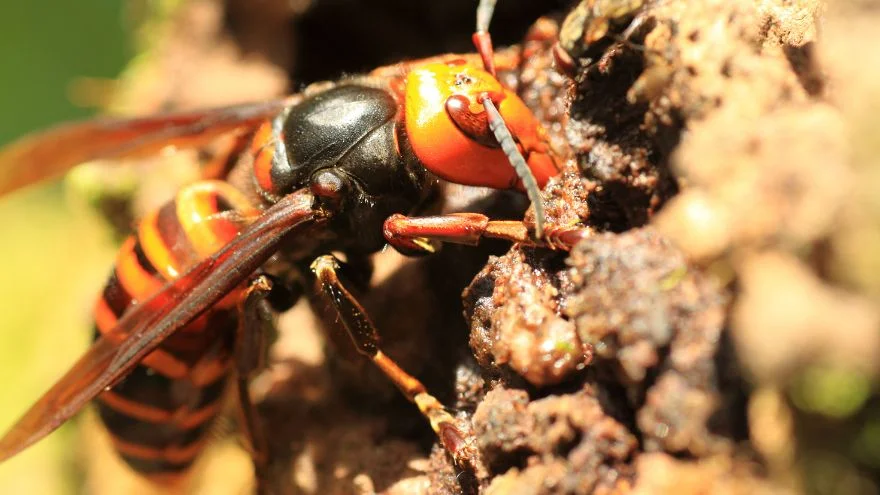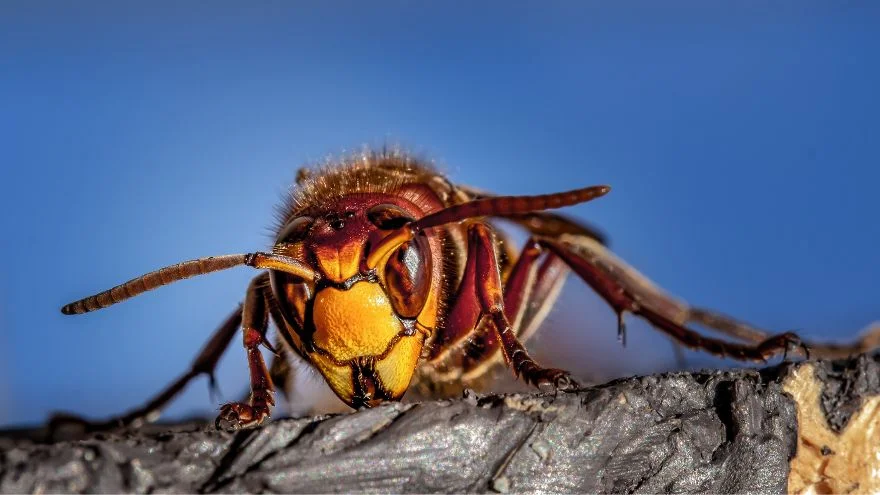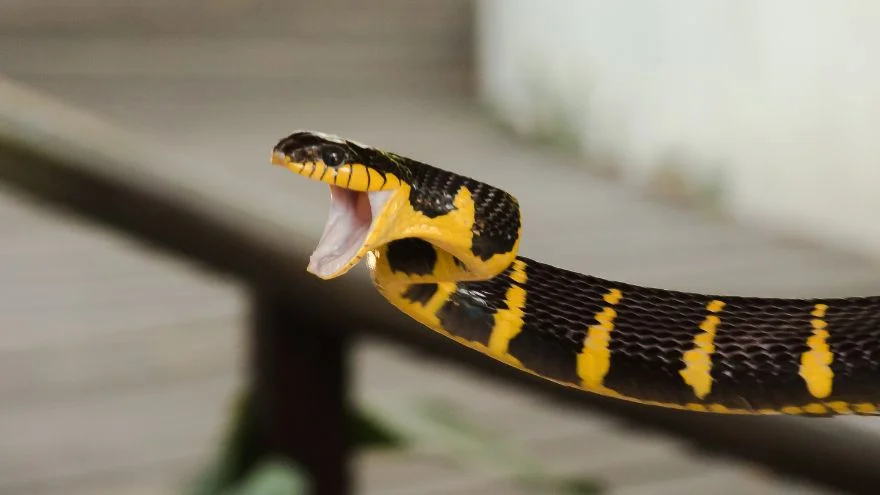Japan is famous for beautiful sites like Mount Fuji, cherry blossoms, vibrant cities cutting-edge technologies, industries, martial art, culture, exotic foods, and what you see in movies.
The country also boasts several species of wildlife, some of which are considered deadly and can easily snap life out of their prey.
Some of the deadliest animals in Japan include the Japanese keelback snake, redback spider, tick, Japanese wild boar, pufferfish, etc., and you need to take extra precautions and avoid them.
So, in this article, we will discuss 12 of the most dangerous animals in Japan and some safety tips for the wildlife in the area.
What are the Most Dangerous Animals in Japan?
1. Japanese Keelback Snake
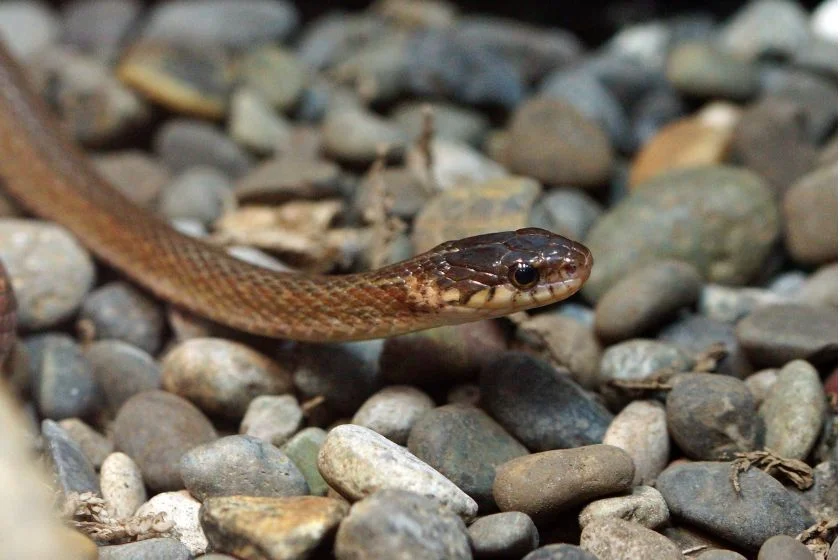
- Scientific name: Amphiesma vibakari
- Classification: Reptile
- Habitat: Grasslands, forests, crop fields
- Diet: Omnivore
- Conservation status: Least concern
The Japanese keelback snake, also known as Kamikomuis, is one of the world’s most dangerous and deadly snakes, not just because of its venom but also its poison.
Toxins are produced in the glands of the base of a snake’s mouth and can be administered by biting its victim.
While its poison, on the other hand, can be passed through its skin.
They are found mainly in the lower parts of Japan, like Honshu and Kyushu, and if you wonder in these locations, always wear protective boots.
Although the poison will not harm you, its venom can be painful and even paralyzing.
Anti-venoms are widely available if and only if you get to a hospital quickly.
2. Redback Spider

- Scientific name: Latrodectus hasselti
- Classification: Arachnid
- Habitat: Savannas, chaparral
- Diet: Carnivore
- Conservation status: Least concern
Reports show how the deadly spiders got into Japan, and the earliest accounts of redback spiders in Japan were in 2009.
However, there was no known fatality. The redback spider lives in places you list expect, like in boots, under your toilet seat, and so on.
Side effects of its bites can include nausea, profuse sweat, vomiting, abdominal pain, and hypertension.
Again, the readily available anti-venom means that the spider’s bite can be cured once bitten.
It doesn’t affect its image of being little demons, though. Just seeing one can send a shiver down your spine.
3. Deer tick

- Scientific name: Ixodes scapularis
- Classification: Arachnid
- Habitat: Forest, underbrush, uncut grass
- Diet: Omnivores
- Conservation status: Not listed
These tiny, seemingly unimportant insects may be the most lethal on the list.
They can infect humans with deadly infections when bitten. In Japanese, they are known as Sika Dani, the deer ticks.
The deer ticks can suck so much blood that they grow up to five times their size.
Like vampires, these ticks feed only on blood and infest their victims with blood-borne diseases, which can be deadly.
4. Japanese Boar

- Scientific name: Sus scrofa
- Classification: Mammal
- Habitat: broadleaf forest
- Diet: Omnivores
- Conservation status: Least concern
Although they look like friendly warthogs, they will kill with their horns if you get in their way, which can be deadly.
Being one of the most dangerous animals in Japan, the wild boars are violent and not scared to strike if they feel threatened.
As large and scary as they look, they are omnivores that feed on vegetation, bugs, worms, and lizards.
You will undoubtedly find wild boars all over Japan, usually not in the city, though, except on your plate.
They are located in all hilly parts of the country. You may also see them moving closer to towns.
5. Pufferfish
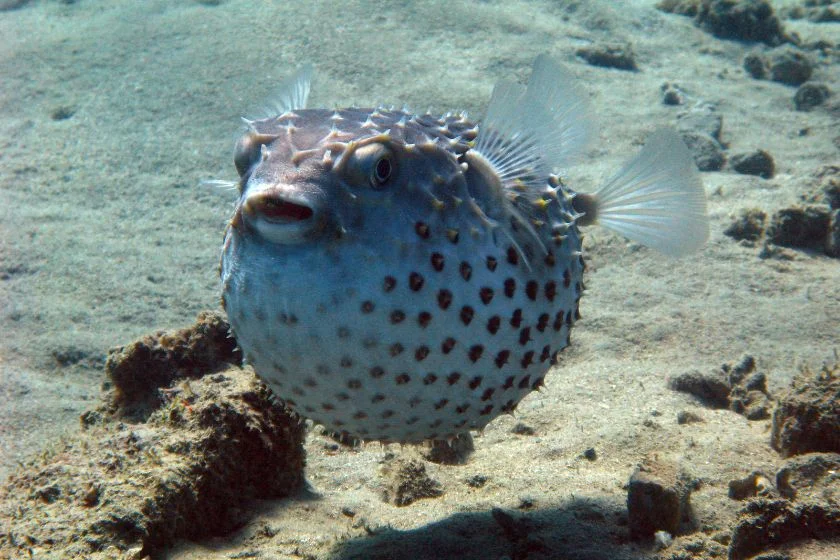
- Scientific name: Tetraodontidae
- Classification: Pisces
- Habitat: Tropics
- Diet: Carnivore
- Conservation status: Least concern
The fugu, also known as the pufferfish, is a famous deadly dinner in Japan.
Unfortunately, the pass mark for being a fugu chef is about 50%, but this does not hinder it from being one of the nation’s top delicacies, so if you see fugu on your menu, be warned.
The pufferfish contains a potent toxin known as tetrodotoxin, and it is so poisonous that one pufferfish can kill up to 25 people.
Although there is currently no cure for this deadly toxin, you should keep your distance from this exotic meal and the pufferfish itself.
6. Habu Snake

- Scientific name: Protobothrops flavoviridis
- Classification: Reptile
- Habitat: Palm forests, cultivated fields
- Diet: Carnivores
- Conservation status: Least concern
The Habu snake is well-known for its rage and extensive striking ability. However, it is mainly nocturnal and can only be located on the islands.
An adult can grow to 5 ft long and is known to prey on smaller rodents to eat. If you cross paths with one, avoid it at all costs.
If attacked, the Habu snakes venom is not entirely deadly but possibly very dangerous as it contains a mixture of two toxins, cytotoxin and hemorrhaging.
Although the anti-venom will stop the spread, one can lose body function after treatment and may be a permanent disability.
If left untreated, symptoms may include vomiting, low blood pressure, and death.
7. Japanese Mountain Leech
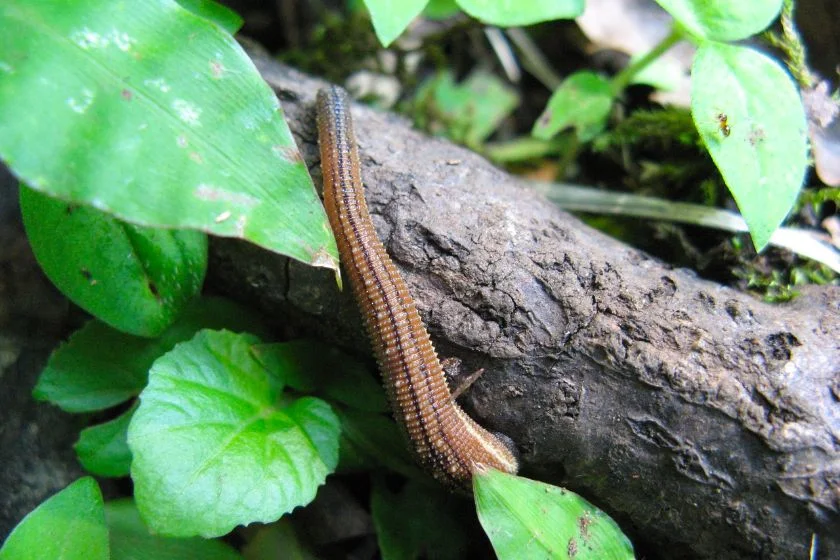
- Scientific name: Haemadipsa zeylanica
- Classification: Clitella
- Habitat: Mountain soil
- Diet: Carnivores
- Conservation status: Not listed
Interestingly, leeches are recommended as a possible treatment to improve blood flow in the body.
But this is one leech you do not want to mess with—the Yamabiru, as the Japanese call them, as its name implies they are silent suckers.
As earthbound creatures, they are found on land rather than in water.
They creep into the socks of their victim to feed, and they won’t feel it. This creature can grow up to ten times its size after feeding.
However, these leeches won’t kill you; being fed on by a number of them while sleeping would severely drain you by morning.
8. Japanese Mamushi Snake
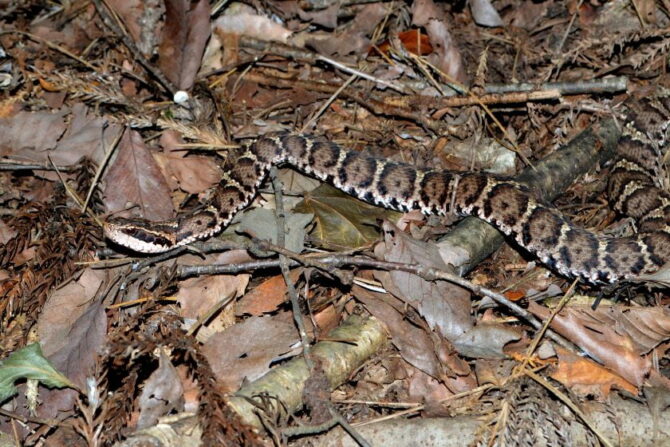
- Scientific name: Gloydius blomhoffii
- Classification: Reptile
- Habitat: Swamps, marshes, rocky hill
- Diet: Omnivores
- Conservation status: Least concern
The Mamushi snake, also known as the Moccasin, is maybe one the most lethal animal on our list.
They can only be located across the main islands of the country.
With its head slightly larger than its body, the Mamushi can grow up to 2.5 ft and but its venom can cause mad damage.
Like the Habu, one bite can cause severe pains if left untreated.
Reactions include skin rot and muscle decay as tissues liquefy due to different neurotoxins in their venom.
It sometimes hides amongst the leaves and on the grasses, lying in wait for its prey.
This is when a human could fall at the mercy of it, so be careful of this when stepping into nature.
9. Asian Giant Hornet
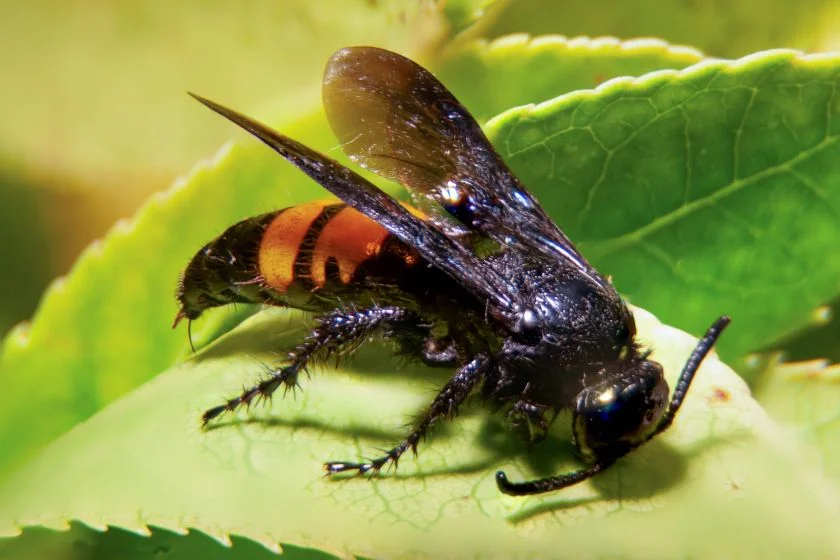
- Scientific name: Vespa mandarinia
- Classification: Insect
- Habitat: Mountains
- Diet: Carnivores
- Conservation status: Near threatened
The Asian giant hornet, also known as Oosuzumebachi in Japan, is one of Japan’s most dangerous insects and can even cause death.
Its toxin can be lethal in large doses, even to those who are not allergic. The hornet is responsible for 30 to 50 deaths per year.
Another reason to fear a swarming hornet is their ability to kill in a short time, so get medical help immediately if stung.
During the summer, a nest of giant hornets can be easily seen in the mountains.
If you are stepping into an area where there is known to be a nest of hornets, you should avoid those parts.
10. Mukade (giant centipede)

- Scientific name: Scolopendra gigantea
- Classification: Arachnid
- Habitat: Crevices and corners
- Diet: Carnivore
- Conservation status: Least concern
A mukade bite is excruciating, perhaps even more painful than the giant hornet.
The mukade can creep into your home and hide in corners, shower drains, and cabinets.
In addition to the pain, it can also cause some swellings around the bite area. The pain will die after a while; if not, seek help immediately.
11. Asian Black Bear
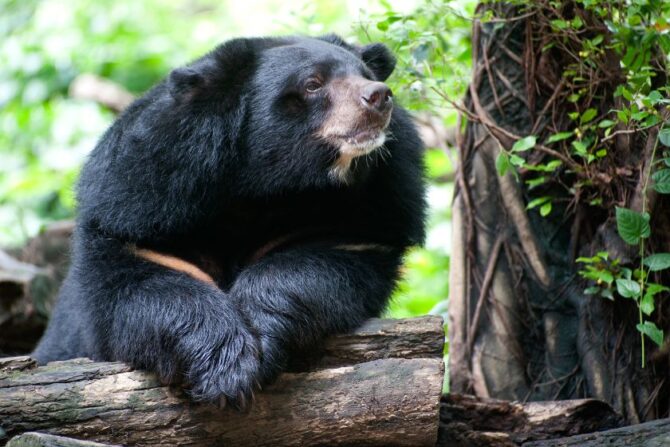
- Scientific name: Ursus tibetanus
- Classification: Mammal
- Habitat: Tropical forest
- Diet: Omnivores
- Conservation status: Endangered
The Asian black bear, also known as the Asiatic black bear, tends to stay in the mountainous areas of Japan.
They can be aggressive and attack if bothered or threatened in their habitat.
But as food become harder to find, encounters between villagers and bears rise, mainly before they go into hibernation.
12. Ussuri Brown Bears
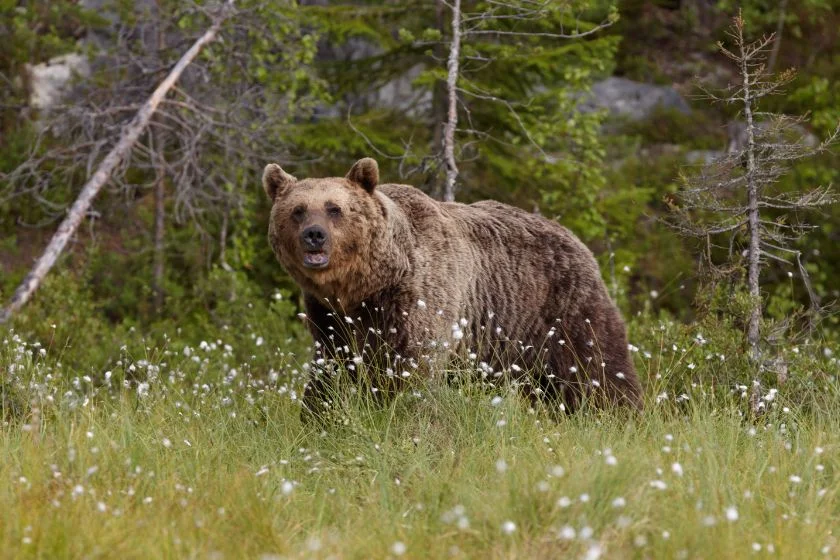
- Scientific name: Ursus arctos lasiotus
- Classification: Mammal
- Habitat: Forest, mountains
- Diet: Omnivores
- Conservation status: Endangered
The brown bear is one of the most fearsome and maybe the most dangerous animal in Japan.
Sadly, the development and felling of trees have stolen their natural habitat, which is the reason for the attacks on humans.
The Ussuri bear has been responsible for the worst bear attacks in Japanese history.
Japan Wildlife Safety Tips
When visiting parks in Japan, strictly adhering to rules and regulations will keep you safe and protect you from any attack.
Ensure to check the laws of each park as each might accord to region or park-specifics.
They include:
- Always respect environment
- Do not light fire in the park as it might scare the animals.
- Stay on the designated path with the tour guide.
- Don’t camp outside any area known to be the habitat of wildlife.
- Never feed the wild animals.
- Don’t approach the wildlife unless the tour guide or appropriate official is told to do so.
Frequently Asked Questions
Are there predators in Japan?
A predator is anything with the natural tendency to hurt others. Predators can come either as mammals, reptiles, or even insects. This then answers the question that Japan is filled with predators.
Are tigers in Japan?
With tigers appearing in movies and all, one would think there are tigers in Japan. The fact remains that tigers are not aboriginal to Japan.
They were imported or given as gifts in the late 1800s and have become family images and symbols of beauty and freedom in Japanese culture.
What is Japan’s most dangerous animal?
The most dangerous animal in Japan is the Asian hornet, also known as the giant hornet, which is responsible for so many fatalities in the country.
Their venom can be lethal in high doses. If you get stung by this insect, you should seek medical help immediately.
Final Thoughts
Although there are no big cats on the list of japans most dangerous animals, it is important to always follow any instructions given by the appropriate officials.
Also, before visiting any unfamiliar region, always research to avoid falling prey to these fearsome creatures.

